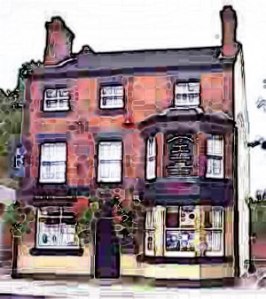Until 1815 the place of execution in Lincoln was at the corner of Burton Road and Westgate where the convenience store and adjoining cottages now stand, known as Hangman’s Ditch.
Mary Johnson murdered her husband and, as was normal practice at that time, she was burned at the stake, before her burning in April 1747 she was garroted by the executioner. Another woman received the same punishment in 1722,
In those days prisoners sentenced to be hanged were often executed in batches, often for very minor offences. On 18th March 1785, nine prisoners were hanged at one time, three for highway robbery, two for sheep-stealing, two for cattle stealing, one for horse stealing and one for housebreaking. It was reported that a crowd of 20,000 watched the executions.
The last person hanged on the old gallows was William Ward, for shop breaking at Mareham, on 1st April 1814.
From 1815 to the passing of the Act abolishing public executions in 1868, the tower in the northeast corner of the castle, known as Cobb Hall, was the place where those sentenced to death were hanged. The gallows was erected on the lead flat roof at the top of the tower.

The Strugglers Inn
Hanging was once a crude affair, those being hanged died of strangulation which meant that they took a long time to die, they struggled on the gallows, hence the name of the inn at the north-west corner of the castle: The Strugglers.
The Strugglers is said to be haunted by a lurcher that belonged to William Clark who was executed on 26th March 1877 for the murder of Henry Walker, a gamekeeper.
William Marwood had developed a method of hanging called the “long drop”. Using the prisoner's height and weight he calculated the length of rope required to instantly break the prisoner's neck at the end of the drop and cause instant death.
William Marwood was born at Goulceby in 1820, about six miles from Horncastle, and lived for some years in Old Bolingbroke, moving to Horncastle about 1860; where he was a shoemaker in Church Street.
Marwood began his career as a hangman assisting his predecessor, William Calcraft, succeeding him in 1872; continuing the duties until his death on 4th September 1883.

Marwood was appointed the official Crown Executioner in 1874 and carried out 178 executions in his 9-year career, His first official act was to hang a man named William Francis Horry, at Lincoln, who murdered his wife at Boston, in 1872; his last was to hang a man, James Burton, at Durham, who murdered his young wife, aged only 18, from jealousy. On this occasion, the man fainted on the scaffold and got entangled with the rope under his arm, and Marwood had to lift him in his arms to get him disentangled, and then drop the unconscious man down - a painful scene.
He hanged the "Irish Invincibles" at Kilmainham Gaol in Dublin between 14th May and 9th June 1883, five Irish nationalists who murdered Lord Frederick Cavendish, the Chief Secretary for Ireland, and Thomas Henry Burke, the Permanent Under-Secretary for Ireland, with surgical knives in Dublin’s Phoenix Park.
Marwood’s wife was unaware of her husband’s official occupation, he would tell her that he had to go away to settle some legal question.
Locations of Hangings in Lincoln:
The image on the left shows the gallows location 1784, hangings were moved to Cobb Hall in 1815. From 1868 hanging took place in the county prison in the castle. Only crimes committed in the county were dealt with in Lincoln, the city gallows was at the top of Canwick Road (Hill)
Drawing by Samuel Hieronymus Grimm.

 Lincoln had been a port since the time of the Roman Empire, shipping grain and produce to other parts of Roman Britain via the Foss dyke canal (it is not known if the Roman's built the whole of the canal, but they may have built the canal from Torksey to Hardwick near Saxilby) and the River Witham.
Lincoln had been a port since the time of the Roman Empire, shipping grain and produce to other parts of Roman Britain via the Foss dyke canal (it is not known if the Roman's built the whole of the canal, but they may have built the canal from Torksey to Hardwick near Saxilby) and the River Witham. In an attempt to improve Lincoln's prosperity, Henry IV, by a charter of 1409, raised Lincoln to the status of a county, "The County of the City of Lincoln", this allowed the city to elect two sheriffs, and to receive the taxes previously paid to the county. Henry also granted a 31 day fair to be held 15 days before and 15 days after 17 November, St Hugh's Feast Day (a 31-day market! Can you imagine Lincoln Christmas Market lasting that long?).
In an attempt to improve Lincoln's prosperity, Henry IV, by a charter of 1409, raised Lincoln to the status of a county, "The County of the City of Lincoln", this allowed the city to elect two sheriffs, and to receive the taxes previously paid to the county. Henry also granted a 31 day fair to be held 15 days before and 15 days after 17 November, St Hugh's Feast Day (a 31-day market! Can you imagine Lincoln Christmas Market lasting that long?).





















